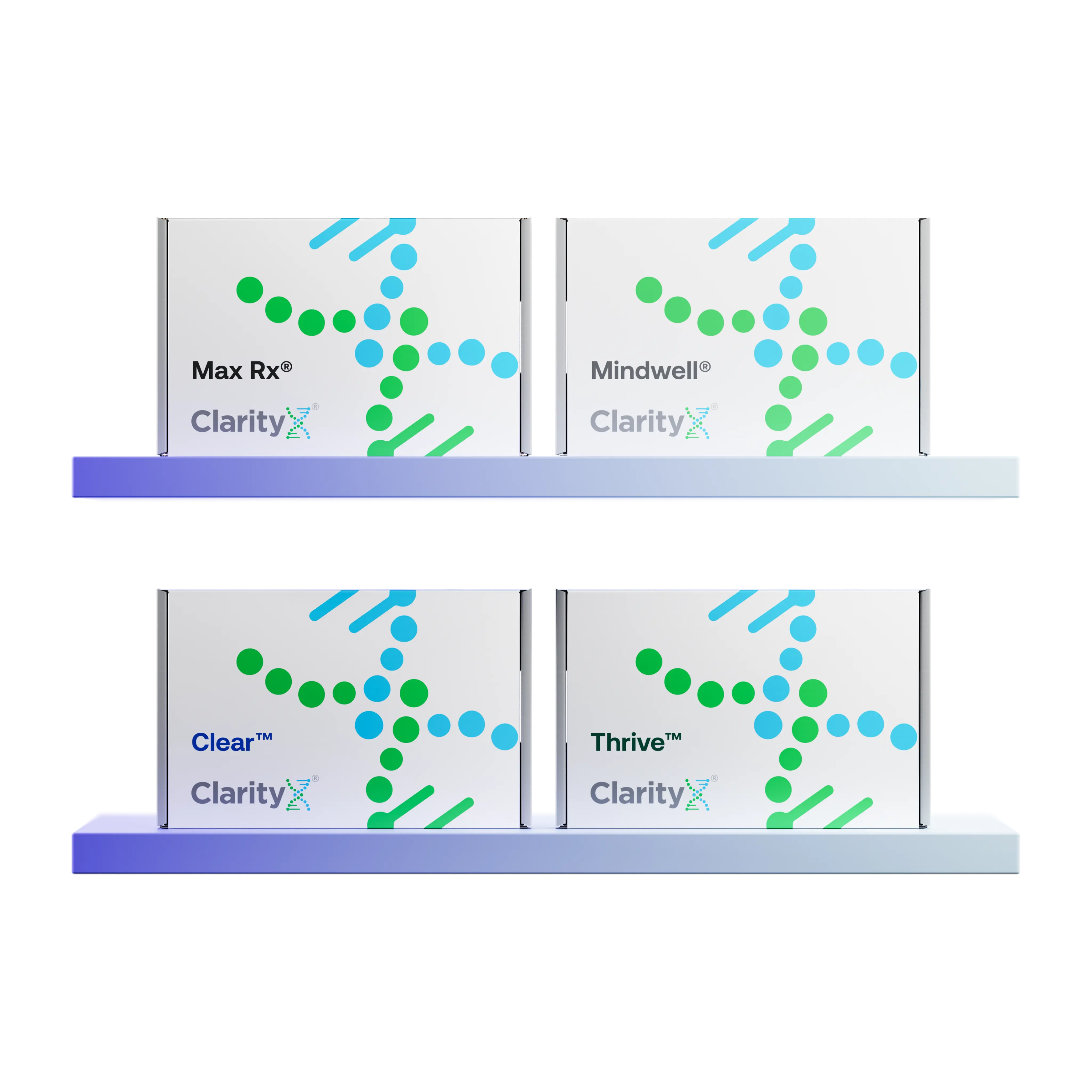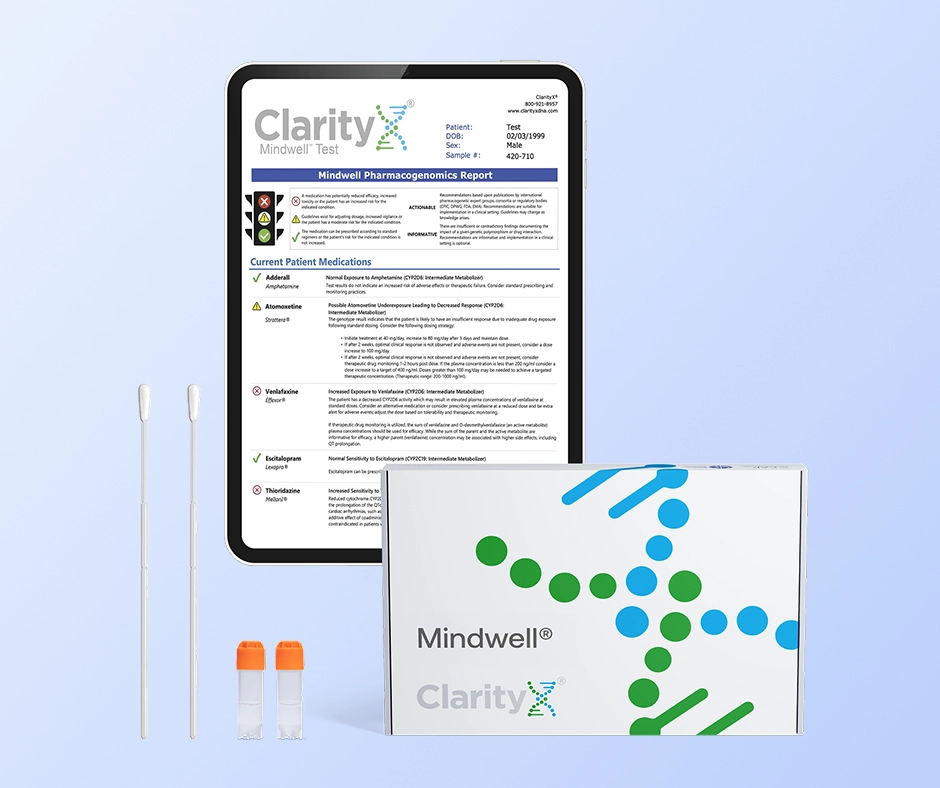In clinical practice, a standalone diagnosis of "depression" or "anxiety" is increasingly rare. Far more common is the patient who presents with a constellation of overlapping symptoms: the persistent dread and worry of Generalized Anxiety Disorder (GAD) combined with the anhedonia and profound sadness of Major Depressive Disorder (MDD). This comorbidity is a significant clinical challenge, not just because the symptom burden is higher, but because it creates a "clinical black box" that makes treatment notoriously difficult.
How do you determine if a patient's insomnia and fatigue are driven by their anxiety or their depression? If you prescribe an activating antidepressant and their anxiety worsens, is that a side effect, or an unmasking of their underlying anxiety disorder?
This is the frustrating reality of "trial-and-error" prescribing. The diagnosis gets you in the ballpark, but the path to an effective medication is still unclear. Pharmacogenetic (PGx) testing provides the data to light that path, allowing clinicians to move beyond the diagnostic label and create a treatment plan based on the patient's unique genetic blueprint.
The "Symptom Overlap" Problem
The diagnostic challenge of comorbid GAD and MDD lies in its "chicken-or-the-egg" nature.
- Restlessness & Agitation: Is it psychomotor agitation from depression, or the hyperarousal of anxiety?
- Poor Concentration: Is it due to the cognitive fog of depression, or the distracting "what-if" loop of GAD?
- Sleep Disturbance: Is it the early-morning awakening common in depression, or the sleep-onset insomnia driven by anxious rumination?
This overlap is precisely why a one-size-fits-all approach fails. A standard dose of a first-line agent may be a perfectly reasonable choice based on the diagnosis, but a complete failure based on the patient's hidden genetic profile.
Clinical Scenario: When a "Side Effect" Mimics the Comorbid Condition
This is the most common trap in treating comorbidity. Let's look at a typical case:
- The Patient: A 35-year-old male with a new diagnosis of comorbid MDD and GAD.
- The Prescription: You select fluoxetine (Prozac), a first-line SSRI with a generally activating profile, hoping to target the low energy from his depression.
- The Follow-up: The patient calls back in one week, reporting "my anxiety is through the roof," along with akathisia, insomnia, and agitation.
- The Conventional Conclusion: You conclude that the fluoxetine is too "activating" for his anxiety, so you stop it and switch to a more "calming" SSRI like escitalopram, restarting the 4-6 week waiting period.
But what if the problem wasn't the drug's intended effect, but its metabolism?
- The PGx Insight: A ClarityX Mindwell® report reveals the patient is a CYP2D6 Poor Metabolizer (PM). His body cannot break down fluoxetine (a CYP2D6 substrate) effectively.
- The Real Problem: The patient isn't experiencing a simple "activating" effect; he's experiencing drug toxicity. The medication is building up in his system far beyond the intended dose, leading to side effects that mimic a severe anxiety attack.
- The PGx-Informed Strategy: The report would have predicted this risk. Armed with that data, you could have started with escitalopram (a CYP2C19 substrate), which would have been a compatible choice for his genetics, potentially leading to a positive response in the first 4-6 weeks instead of a "failed" medication trial.
Beyond Metabolism: A Deeper Look at Neurotransmitter Pathways
Treating comorbidity effectively requires a holistic view. A key advantage of the ClarityX Mindwell® panel is that it is not restricted by insurance reimbursement limitations, allowing it to include critical genes that provide a more complete clinical picture beyond just CYP450 metabolism.
Two of the most important are MTHFR and COMT.
1. The MTHFR Gene: The "Building Block" Factor
The MTHFR gene provides the instructions for an enzyme that creates L-methylfolate, the active form of folate that can cross the blood-brain barrier. This L-methylfolate is an essential co-factor in the production of serotonin, dopamine, and norepinephrine.
- Clinical Implication: A patient with a high-impact MTHFR variant may have a functional "neurotransmitter factory" that is running at half-speed. They may not be producing enough serotonin for an SSRI to be effective. For these comorbid patients, who often feel "treatment-resistant," the PGx report provides an evidence-based rationale for an augmentation strategy, such as adding L-methylfolate, to support the fundamental biology of neurotransmitter synthesis.
2. The COMT Gene: The "Anxiety vs. Depression" Differentiator
The COMT enzyme is responsible for breaking down dopamine and norepinephrine, particularly in the prefrontal cortex. A common variant (Val158Met) determines its speed:
- (Val/Val): Have fast-acting COMT, resulting in lower baseline dopamine.
- (Met/Met): Have slow-acting COMT, resulting in higher baseline dopamine and a potential predisposition to anxiety.
- Clinical Implication: For a comorbid patient, this gene is incredibly insightful. A "Worrier" (slow COMT) who already has high levels of "anxiety" neurotransmitters may have a severe negative reaction to an SNRI (like venlafaxine) or bupropion, which further increases norepinephrine and dopamine. For this patient, a pure SSRI would be a much safer and more logical first choice. The COMT gene status helps you differentiate your treatment plan to match the patient's unique neurobiology.
Conclusion: From a Comorbid Diagnosis to a Precise Treatment Plan
The diagnosis of comorbid depression and anxiety is just the beginning. It identifies the problem, but it doesn't illuminate the path to a solution. Pharmacogenetic testing provides the critical data needed to navigate this complex clinical landscape.
By integrating a ClarityX MaxRx® report into your practice, you are not just prescribing medication; you are executing a personalized, data-driven treatment strategy. It allows you to anticipate and prevent side effects, select an agent with a higher probability of success, and build a foundation of trust with your patient all of which are essential for helping them achieve wellness.






